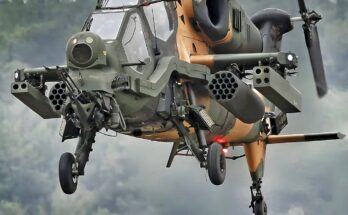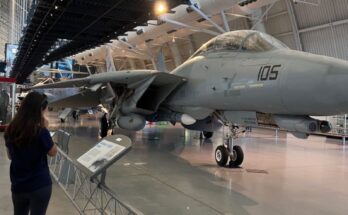
The F-22 Raptor holds a legendary reputation among modern fighter jets. Designed by Lockheed Martin, it entered service with the United States Air Force in 2005 and quickly became one of the most advanced aircraft of its kind. With unmatched stealth, speed, and agility, the F-22 is often described as the king of the skies. But there’s an important limitation many people don’t realize: the Raptor is strictly a land-based jet. Despite its dominance in the air, it cannot be launched or recovered from an aircraft carrier.
To understand why, it helps to look at how carrier-based jets are built. Aircraft that operate from carriers need to be strengthened in very specific ways. The stresses of catapult launches and arrested landings are extreme compared to traditional runway operations. Carrier jets require reinforced landing gear, tail hooks designed for heavy shock, and folding wings to save space on crowded flight decks. The F-22 lacks all of these features. Its design focused on stealth and air superiority over long distances, not carrier operations.
Weight is another major factor. The F-22 has a maximum takeoff weight of about 83,500 pounds. This heavy frame makes it far too large for the tight confines of carrier elevators and hangar bays. Even if its landing gear were reinforced, the jet would simply be too heavy and bulky to operate efficiently in a naval environment. By contrast, the U.S. Navy’s carrier fighters, like the F/A-18 Super Hornet or the newer F-35C Lightning II, are built smaller, with structural modifications that allow them to endure repeated carrier landings.
There’s also the issue of corrosion. Carrier jets operate in harsh maritime environments, where constant exposure to saltwater demands special materials and coatings. The F-22, built for land bases, wasn’t engineered to handle that environment without significant modifications. Over time, operating the Raptor at sea would likely cause serious durability and maintenance problems.
Some have wondered why the U.S. never developed a naval version of the F-22. In fact, early on, the Navy did explore the idea of adapting the jet for carrier use. This project, sometimes referred to as the “Navalized F-22,” was ultimately deemed too costly and impractical. The Navy instead pursued the F-35 program, which offered a more versatile platform that could be built in versions for the Air Force, Navy, and Marine Corps. Today, the F-35C fills the role of a stealth fighter capable of carrier operations, while the F-22 remains the Air Force’s crown jewel for air dominance.
So, while the F-22 Raptor is a technological marvel, its realm is the open sky above land, not the decks of aircraft carriers. It was never meant to be a jack-of-all-trades. Instead, it was purpose-built to secure absolute air superiority. That design choice has paid off: the F-22 remains one of the most formidable air-to-air fighters in the world. But when it comes to carrier operations, the Raptor bows out, leaving the job to aircraft designed with the sea in mind.


